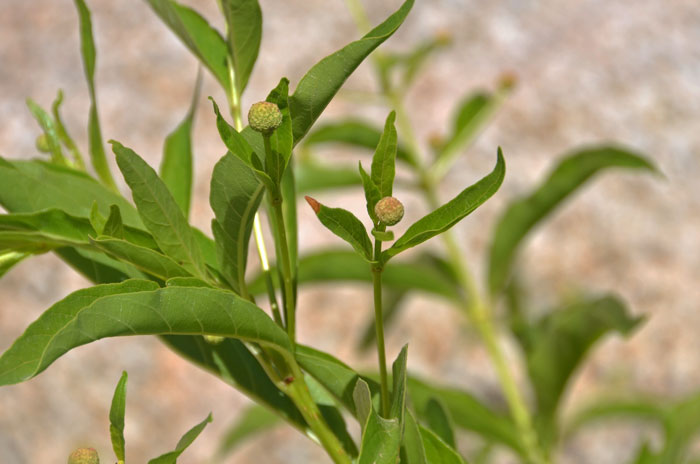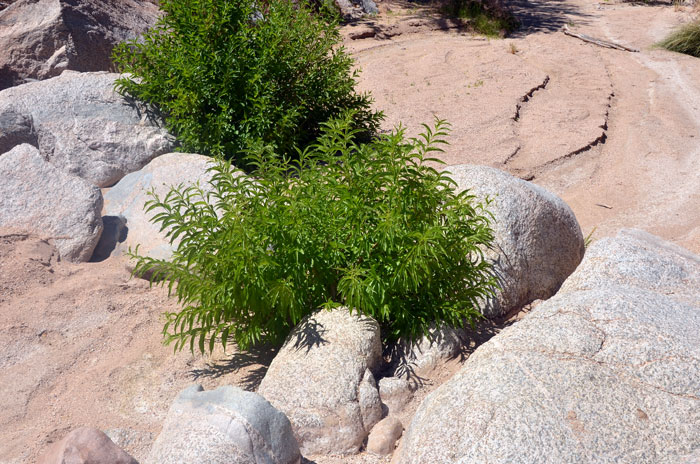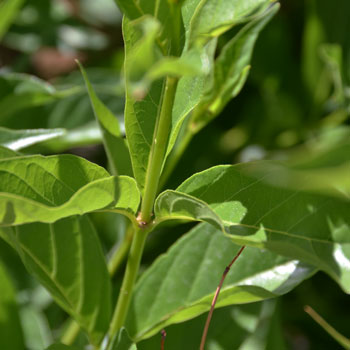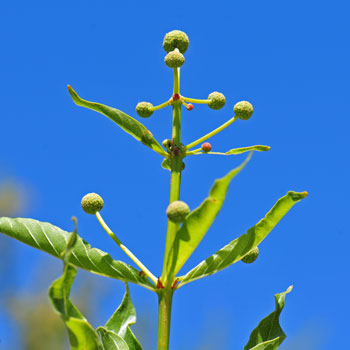Cephalanthus occidentalis, Common Buttonbush





Scientific Name: Cephalanthus occidentalis
Common Name: Common Buttonbush
Also Called: Buttonbush, Button-bush, Common Buttonbush (Spanish: Mimbro, Mimbre)
Family: Rubiaceae, Coffee, Madder or Bedstraw Family
Synonyms: (Cephalanthus occidentalis var. californicus, Cephalanthus occidentalis var. occidentalis, Cephalanthus occidentalis var. pubescens, Cephalanthus pubescens)
Status: Native
Duration: Perennial
Size: In Arizona usually about 6 to 10 feet or so; elsewhere up to 30 feet.
Growth Form: Shrub , tree; growth form shrubby; multiple stems, new stems round, reddish is color and glabrous.
Leaves: Leaves are large and in pairs or in whorls of 3, petiolate; leaves up to 8 inches, broadly lanceolate to oblong-ovate or elliptic; upper (adaxial)leaves with glossy, under-side (abaxial)of leaf without much shine; glabrous.
Flower Color: White or yellowish; large showy in dense spherical or globose heads, heads with long, up to 2 inches peduncles; individual flowers small white, slender tubular; stigma exserted to 4mm; corolla tubular-funnelform; fruits, true to name in button-like balls, achenes-like, 1 or 2 seeded.
Flowering Season: June to September.
Elevation: 1,000 to 5,000 feet; near sea-level to 3,000 feet in California.
Habitat Preferences: Wet soil along streams, sometimes in dry washes with periodic rainfall; lake or stream edges in California.
Recorded Range: Common Buttonbush is found mostly east of the Mississippi River and eastern Canada. It is also native to Arizona, California and Texas, and northwest and central Mexico.
North America & US County Distribution Map for Cephalanthus occidentalis.
U.S. Weed Information: No information available.
Invasive/Noxious Weed Information: No information available.
Wetland Indicator: In North America species has the following wetland designations: Arid West, OBL; Atlantic and Gulf Coastal Plain, OBL; Eastern Mountains and Piedmont, OBL; Great Plains, OBL; Midwest, OBL; Northcentral & Northeast, OBL; Western Mountains, Valleys, and Coast, OBL
OBL = Obligate Wetland, almost always occur in wetlands.
Threatened/Endangered Information: No information available.
Arizona and California each have 1 species of Cephalanthus, Texas has 2 species, Nevada, New Mexico and Utah have 0 species. All data is approximate and subject to taxonomic changes.
Comments: Cephalanthus occidentalis is possibly poisonous to livestock as it contains glucosides, including cephalanthine. It is not very palatable to livestock although native bees are attracted to the showy tubular flowers. Cephalanthus occidentalis is a caterpillar host for 2 moths; Hydrangea sphinx, Darapsa versicolor and Titan sphinx Aellopos titan.
Cephalanthus occidentalis has been used for a variety of purposes by North American indigenous peoples.
Chickasaw Drug, Eye Medicine, Poultice of warmed roots applied to the head for eye troubles.
Choctaw Drug, Antidiarrheal, Strong decoction of tree bark taken as a favorite medicine for dysentery.
Comanche Other, Toys & Games, Wood used to make game sticks.
Kiowa Drug, Antihemorrhagic, Decoction of roots taken for hemorrhages.
Koasati Drug, Antirheumatic (Internal), Decoction of leaves taken for rheumatism.
Seminole Drug, Other, Decoction of roots taken for menstruation sickness: yellow eyes and skin, weakness and shaking head. If a man has sexual intercourse with a woman during her menstrual period, the results were more serious than the other menstruation sickness. A doctor would never do this, as it would damage the 'medicine' which he has in his body. Other men were, sometimes, willing to take the risk.
See ethno-botanical uses at Native American Ethnobotany, University of Michigan, Dearborn.

